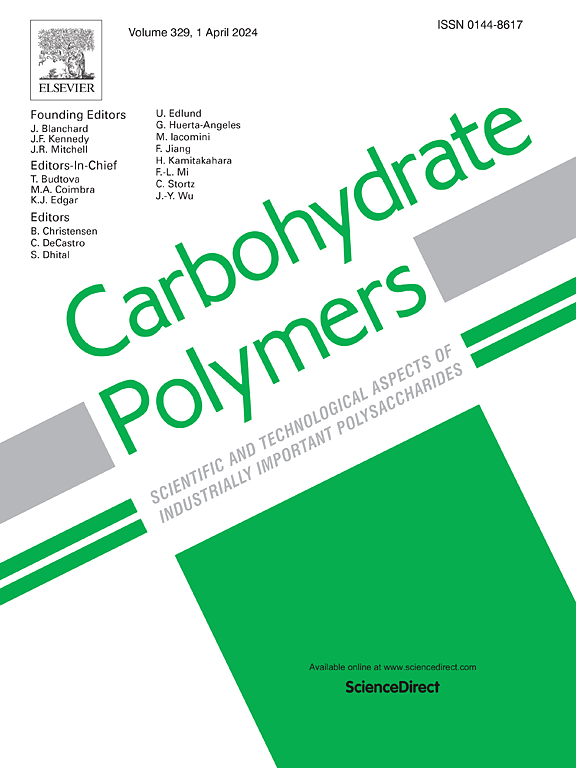Structural and functional characteristics of esterified starch and microencapsulation for urate-lowering probiotic: Effect of hydrophobic side-chain length
IF 10.7
1区 化学
Q1 CHEMISTRY, APPLIED
引用次数: 0
Abstract
Esterified starch exhibits desirable freeze-thaw stability and emulsifying properties; however, there are limited reports on how the side-chain length of the acid anhydride affects the antifreeze activity and microencapsulation ability of starch. In this study, four types esterified starch with different hydrophobic chains were prepared and their physicochemical characteristics were explored. The results indicated that acid anhydride modification decreased the amylose content and relative crystallinity of native starch and altered its surface composition. Dodecenyl and hexadecenyl succinic anhydrides rendered the starch with relatively low degree of substitution but strong surface hydrophobicity (>120°). The order of anhydrides with different chain lengths to impart emulsifying ability to starch was dodecenyl succinic anhydride > octenyl succinic anhydride > hexadecenyl succinic anhydride > maleic anhydride, whereas the O/W Pickering emulsion storage stability of hexadecenyl succinic anhydride-esterified starch significantly decreased. Moreover, modified starches with superior freeze–thaw stability for microencapsulation improved the freeze-drying resistance of urate-lowering probiotics. Meanwhile, the encapsulated probiotics which passage through a simulated digestion exhibited superior xanthine oxidase inhibition. These results indicate that the appropriate chain-length acid-anhydride-modified starch is a promising cryoprotectant for frozen products.

求助全文
约1分钟内获得全文
求助全文
来源期刊

Carbohydrate Polymers
化学-高分子科学
CiteScore
22.40
自引率
8.00%
发文量
1286
审稿时长
47 days
期刊介绍:
Carbohydrate Polymers stands as a prominent journal in the glycoscience field, dedicated to exploring and harnessing the potential of polysaccharides with applications spanning bioenergy, bioplastics, biomaterials, biorefining, chemistry, drug delivery, food, health, nanotechnology, packaging, paper, pharmaceuticals, medicine, oil recovery, textiles, tissue engineering, wood, and various aspects of glycoscience.
The journal emphasizes the central role of well-characterized carbohydrate polymers, highlighting their significance as the primary focus rather than a peripheral topic. Each paper must prominently feature at least one named carbohydrate polymer, evident in both citation and title, with a commitment to innovative research that advances scientific knowledge.
 求助内容:
求助内容: 应助结果提醒方式:
应助结果提醒方式:


